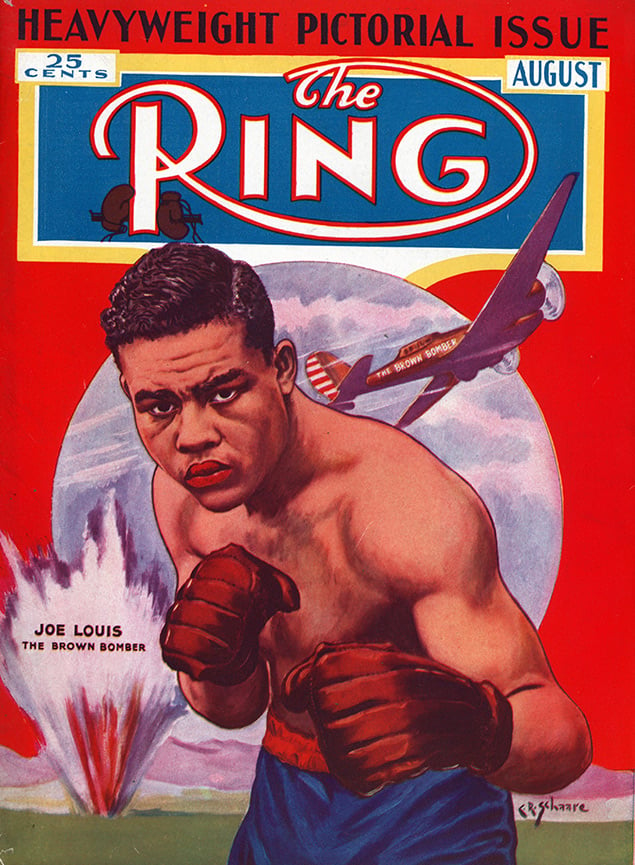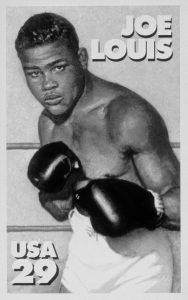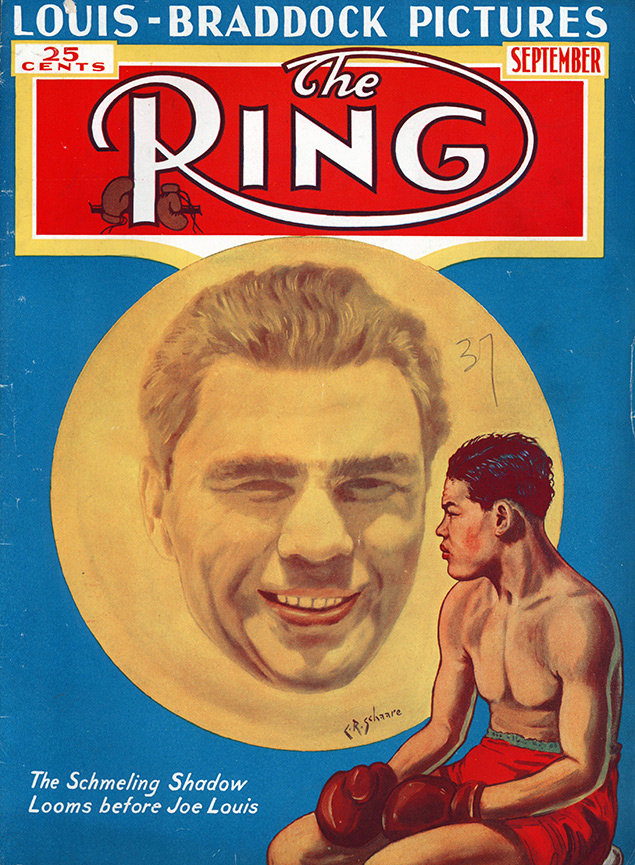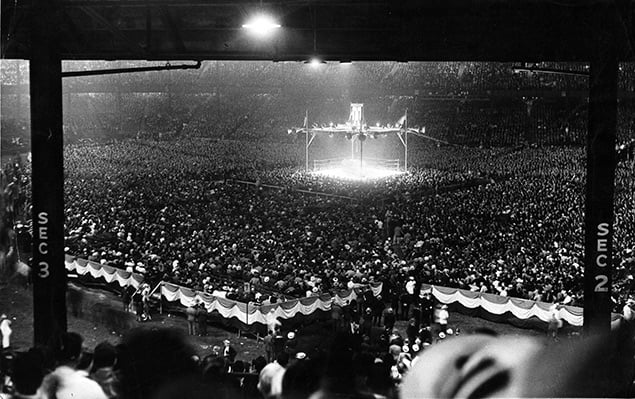The Ring Archives: Born on this day: Joe Louis – part one


Photo by THE RING Archive
Joseph Louis Barrow was born on this day, May 13, 1914 in Lafayette, Alabama. His family moved to Detroit when he was a child and it was in the Motor City where he was introduced to boxing. Competing out of the Brewster-Wheeler Recreation Center in Detroit’s “Black Bottom” area, Louis won the national AAU light heavyweight title in 1934 en route to compiling a 53-3 amateur record. His amateur credentials were impressive but nothing in comparison to his all-time great accomplishments in the pro ranks where, fighting as Joe Louis with “The Brown Bomber” moniker, he won the heavyweight championship of the world just three years after his debut by dethroning James Braddock in 1937.
Louis, who compiled a pro record of 64-3, with 50 knockouts, held the “biggest prize in sports” until 1949. During his 11-year reign, Louis defended the heavyweight title 25 consecutive times – the record for any division that still stands. However, Louis’ road to the heavyweight title wasn’t easy. He suffered his first pro loss, to former champ Max Schmeling, one year before he challenged Braddock. The following Ring Magazine covers and photos, from the publication’s archives, chronicle Louis’ two-year journey from exposed prospect to heavyweight champ to American hero.

Schmeling, the German contender who had won and lost the heavyweight title to Jack Sharkey in 1930 and 1931, was considered past his prime when he was matched with Louis in June 19, 1936.

Schmeling had been KO’d by Max Baer in 1933. Louis easily dispatched Baer in 1935. However, Schmeling said he saw a flaw in Louis’ technique and proved it by stopping the streaking American KO artist in 12 rounds.

Despite stopping Braddock in the eighth round to earn the heavyweight title – only the second African American to do so following Jack Johnson’s reign from 1908-1915 – Louis said he wouldn’t feel like ‘the champ” until he avenged his defeat to Schmeling.

With America’s involvement in World War II looming, and German leaders (unfairly) upholding Schmeling as a symbol of Nazi and Aryan superiority following his KO of Louis, their rematch at Yankee Stadium on June 22, 1938, took on global significance.

Did Louis feel the weight of the world on his broad shoulders the night he faced Schmeling the second time? If he did, he expertly transferred that weight into his mighty fists with near-lethal precision, stopping Schmeling in one round and breaking parts of his rival’s back in the brutal process.

How big of an event was Louis-Schmeling II? This shot of 75,000 fans in attendance at Yankee Stadium should answer that question. Americans, black and white, gathered to witness Louis evolve into a symbol of freedom.

Henry Armstrong arguably had the most accomplished year ever for a pro boxer in 1938 when, as the reigning featherweight champ, he won the welterweight and lightweight titles. But Louis’ rematch blowout of Schmeling made him a transcendent figure. When someone called Louis a “credit to his race,” sports writer Jimmy Cannon replied: “Yes, the human race.”















